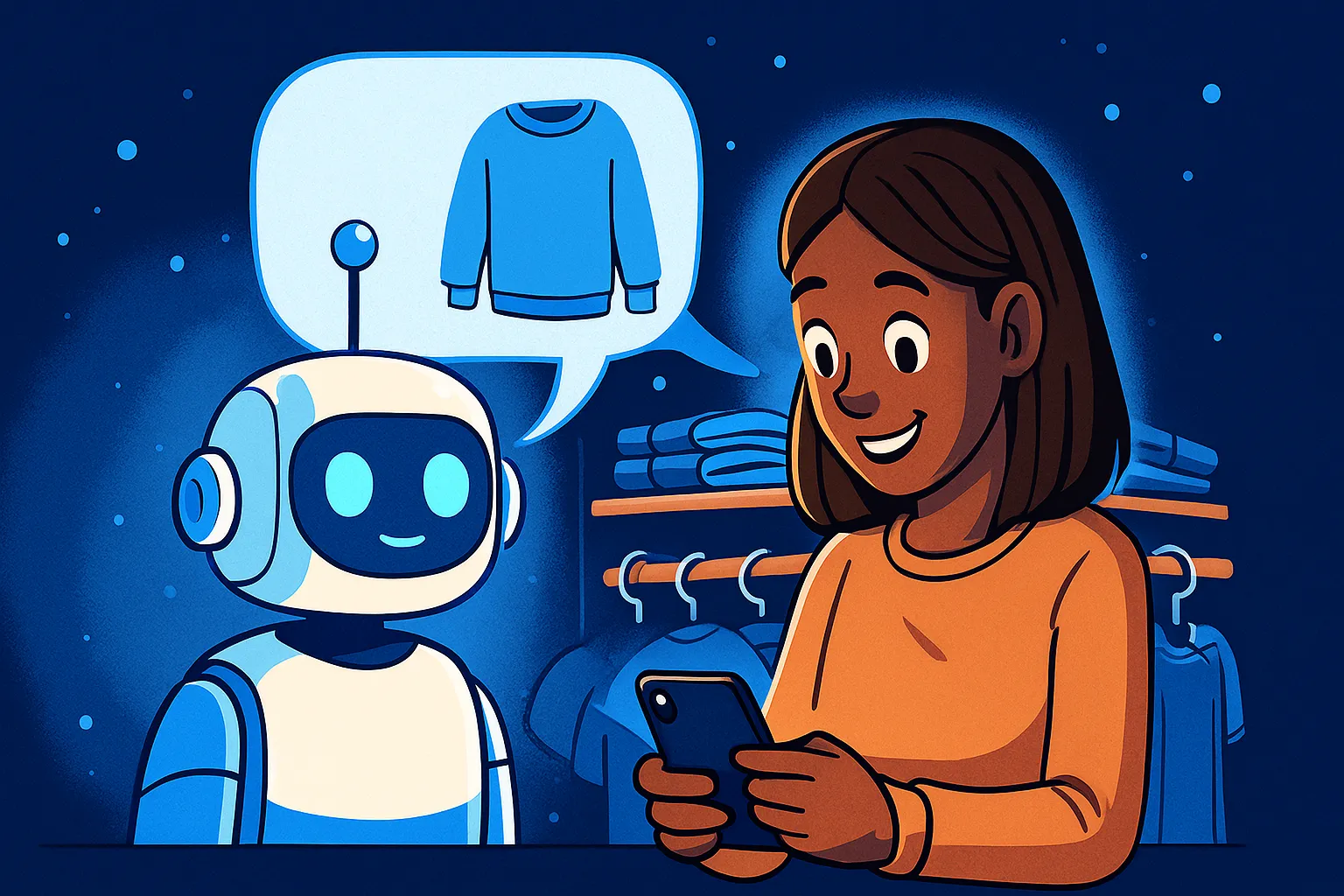Chatbots Enter E-commerce as the New Sales Force
E-commerce platforms have embraced chatbots as more than a support tool. They are presented as digital sales representatives, capable of guiding customers through the buying journey with efficiency and precision. By automating responses and nudging users toward products, chatbots are framed as a force multiplier for sales teams. They never sleep, never tire, and can engage thousands of customers simultaneously. The appeal for businesses is obvious: lower costs, faster responses, and the promise of higher conversion rates.
Marketers have positioned chatbots as a solution to one of the industry’s biggest challenges: abandoned carts. With timely prompts, personalized recommendations, and targeted offers, bots promise to recover lost revenue while giving customers the sense of instant assistance. Investors and executives are drawn to the narrative that automation translates directly into growth. In this framing, chatbots are not just convenient add-ons. They are marketed as a new sales engine designed to transform digital storefronts into intelligent, always-on marketplaces.
Businesses Frame Chatbots as Efficiency and Personalization Engines

For executives, the attraction of chatbots goes beyond simple automation. They are promoted as a way to scale customer service while simultaneously delivering personalized experiences. By integrating with data platforms, chatbots can greet a returning customer by name, recall purchase history, and suggest products that appear tailored to individual preferences. This creates the impression of one-to-one interaction at a fraction of the cost of human labor. Efficiency and personalization are fused together in a narrative that appeals strongly to business leaders under pressure to deliver growth without inflating operational expenses.
The language used to describe these systems often emphasizes their strategic role. Chatbots are presented as brand ambassadors, capable of maintaining tone, consistency, and responsiveness across every interaction. They are pitched as tools that transform customer service from a cost center into a driver of revenue. Businesses portray them as scalable assets that can operate across time zones and languages without additional staffing. In boardrooms and pitch decks, chatbots are framed not as experimental novelties but as the next stage in digital transformation, promising to streamline processes while making customers feel recognized and valued.
Automation Fatigue Fuels Customer Frustration and Skepticism

For many customers, the promise of chatbots as helpful guides collides with the reality of repetitive scripts and limited problem-solving ability. Instead of feeling assisted, users often encounter a loop of pre-set responses that fail to address their specific needs. The experience can quickly shift from convenience to frustration, as customers realize they are interacting with a machine that cannot adapt. This phenomenon, often described as automation fatigue, erodes trust in the very technology designed to enhance engagement.
The impact on e-commerce is significant. A shopper who is pushed through irrelevant recommendations or trapped in automated pathways may abandon the purchase altogether. Worse, the irritation lingers, influencing long-term loyalty and brand perception. Customers who expect empathy and responsiveness feel alienated by systems that prioritize efficiency over understanding. While businesses highlight the cost savings, the tradeoff can be steep when dissatisfied customers disengage. The skepticism that emerges from these experiences makes buyers more cautious about future chatbot interactions, creating a barrier to adoption that undermines the original promise of increased sales and improved satisfaction.
Chatbots Walk the Line Between Convenience and Manipulation

The effectiveness of chatbots lies in their ability to operate on a delicate boundary. When well-designed, they provide genuine convenience, offering quick answers, guiding navigation, and streamlining checkout processes. Customers appreciate speed and efficiency when these interactions feel supportive. Yet the same tools can easily slip into manipulation when programmed primarily to drive sales. Overly aggressive upselling, constant promotional nudges, and invasive product suggestions turn an assistant into a salesperson who refuses to listen.
This tension reflects the dual identity of chatbots in e-commerce. They are celebrated as helpers yet often deployed as conversion machines. The moment a customer senses that the interaction prioritizes company profits over their needs, the trust begins to unravel. The difference between a smooth shopping experience and a manipulative one can hinge on subtle design choices, such as whether the bot offers genuine problem resolution or merely redirects toward more purchases. Businesses face a strategic dilemma: pursue short-term sales gains through pressure tactics or build lasting trust through balanced engagement. Chatbots occupy this contested middle ground, where convenience and manipulation coexist in uneasy proximity.
Trust Becomes the Decisive Factor in Chatbot Success

As chatbots become more embedded in e-commerce, trust emerges as the ultimate determinant of their success. Customers are willing to accept automation when it feels transparent, respectful, and aligned with their interests. A bot that clearly identifies itself as an AI assistant, explains why certain recommendations are being made, and provides an easy path to human support fosters a sense of honesty. In these cases, customers may even prefer the chatbot for its speed and consistency.
The opposite occurs when systems obscure their limitations or attempt to mimic humans without disclosure. Deceptive design choices undermine confidence and make buyers feel manipulated. Once trust is broken, even the most advanced features cannot repair the damage. Businesses that view chatbots purely as sales tools risk overlooking this critical factor. The long-term value of automation lies less in the volume of immediate conversions and more in the durability of customer relationships it supports. Transparency, empathy, and accountability are not secondary features but core requirements. In the competitive world of online retail, trust becomes the line separating technology that builds loyalty from technology that accelerates its erosion.
From Scripted Interactions to Intelligent Assistants Shaping E-commerce’s Future

The debate around chatbots in e-commerce captures the crossroads between efficiency and authenticity. Early deployments relied heavily on rigid scripts that frustrated as many customers as they converted. Yet as artificial intelligence advances, chatbots are evolving into more intelligent assistants capable of understanding context, adapting tone, and escalating issues seamlessly to human teams. The trajectory suggests that their future role will depend less on automation for its own sake and more on their ability to serve as trusted partners in the shopping journey.
For leaders and marketers, the challenge is clear. Chatbots can boost sales when they deliver relevance, transparency, and genuine assistance. They can also destroy trust when they prioritize manipulation or disguise limitations. The winners in e-commerce will be those who design chatbot strategies that combine machine efficiency with human empathy, creating digital assistants that drive both revenue and long-term loyalty.
How secure are H-in-Q’s solutions?
All tools are GDPR-aligned, privacy-first, and built with encrypted pipelines.
Do you build custom AI models?
Yes. We fine-tune models (NLP, prediction, segmentation) for each client’s vertical.
Can clients access dashboards directly?
Absolutely. All outputs are dashboard-ready and integrate with BI tools like Power BI or Tableau.
What languages are supported?
Our solutions engage in 45+ languages with automatic detection and semantic consistency.
How fast can we deploy a solution?
Most go live within days thanks to plug-and-play connectors and modular architecture.
What happens to client data?
Data stays secure, used only for model training and processing, with full transparency and client control.
References
- Exploring Chatbot Trust: Antecedents and Behavioural Outcomes – PMC
- The Role of Chatbots in Modern E-commerce – NP Digital
- How AI-Powered Chatbots Can Make – or Break – Consumer Trust – UWM News
- The Impact of AI Chatbots on E-commerce Sales – Cavefish AI
- AI-Based Chatbots in Conversational Commerce and Their Effects – PMC
- https://h-in-q.com/analytics/



